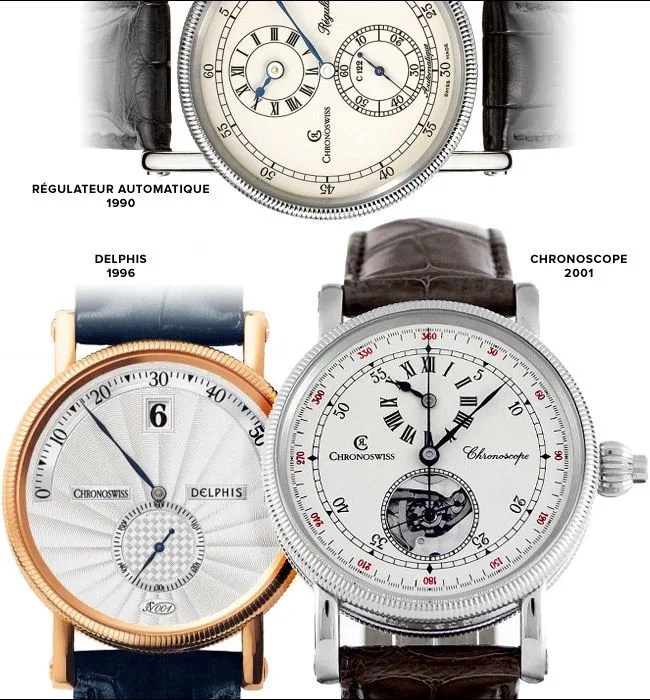It’s 1981. The Quartz crisis is in full swing. You’re a thirty-something watchmaker, trained in the old-school ways of repairing mechanical watches. But, along with numerous other watchmakers in this horological downturn, you’ve just lost your position with one of the biggest names in the chronograph world because you know nothing about quartz movements.
What do you do?
If you’re Gerd-Rüdiger Lang, you start a watch company. A mechanical watch company. To be sure, Lang started small, repairing chronographs in his basement. But he quickly branched out into doing custom, semi-bespoke watches for well-heeled clients. Soon he was making timepieces of his own design. In 1982 Lang presented his first “Chronoswiss” branded watch to the world, and in 1983, he officially founded the Chronoswiss brand in Munich and began work on worldwide distribution.
MORE ICONIC TIMEPIECE MASTERS: Breitling Navitimer | Audemars Piguet Royal Oak | Jaeger-LeCoultre Reverso
As demonstrated by his brand’s name, Lang’s first love has always been the chronograph. His personal collection contains 700-1000 watches, all of them chronographs. And he’s the main author of the book Chronograph Wristwatches: To Stop Time. As for his personal philosophy, well, it’s best summed up in this quote: “…All the watches you see here I made first for me, not for you. I am a watchmaker, not a manager, and this is my toy. I make it for me and when it is good, I make more.”
With a background working with chronographs at Heuer, Lang was continually inspired by timing and scoring. He was also spurred on by his affection for antique sports cars. Early Chronoswiss ads feature Lang at the wheel of his Jaguar XK120 Alu Roadster OTS, sometimes with his daughter Natalie, also a watchmaker, in the passenger seat. In 1971 Lang collaborated with Steve McQueen on the filming of Le Mans, a movie in which McQueen wore the famous Heuer Monaco. Lang also serving as an official timer at various F1 races throughout the 1970s and eventually branched out to other timed sports. He was an official timekeeper at the 1980 Summer Olympics in Moscow.
Given all that, it’s no surprise that many of Lang’s watches hark to a time when stopwatches ruled the sporting world. Racing and rallying informed much of his design philosophy. In fact, the Boardmaster / Wristmaster, consisting of a conventional watch and a stopwatch with 30 minute and 12 hour sub-dials, each in its own case and mounted side by side (for the wrist or the dashboard), may be the quintessential Chronoswiss offering.

